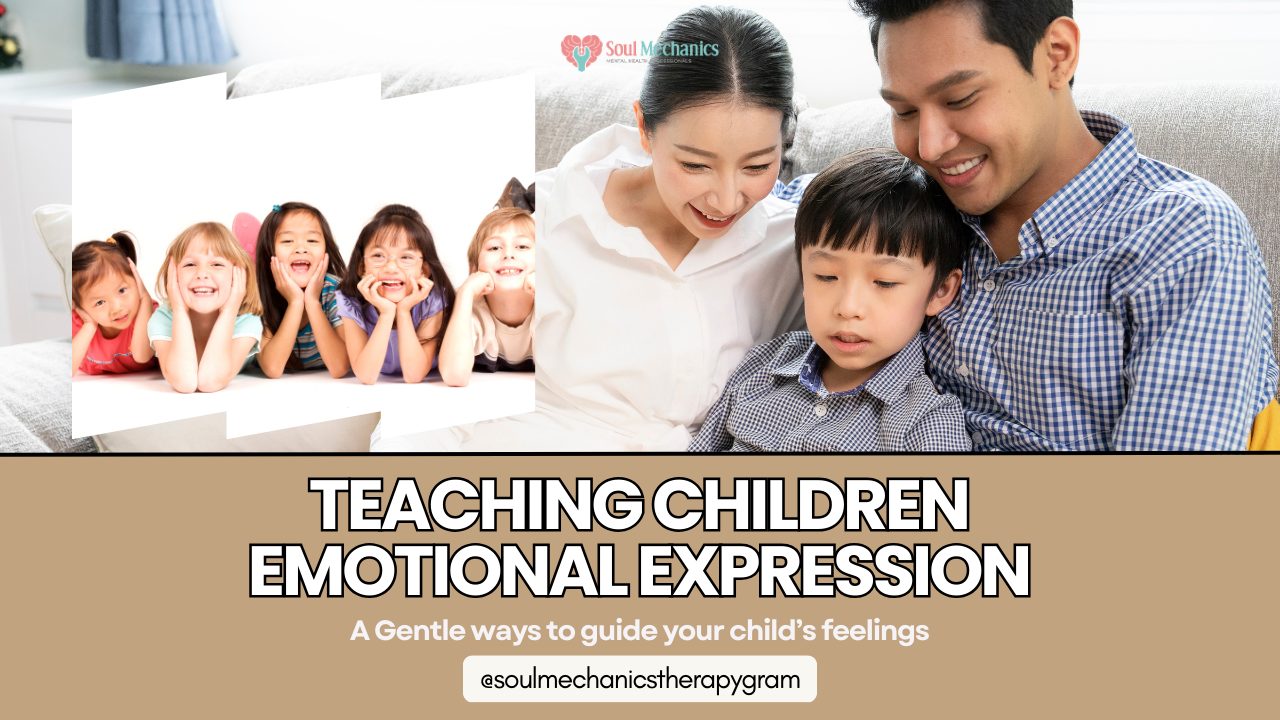Teaching Children Emotional Expression
Teaching Children Emotional Expression

Written By: Shaundtrya Ganasan, Licensed Counselor (KB11097)
As parents, we work hard to provide and protect our children — giving them food, safety, and guidance. But there’s another responsibility that’s just as important: teaching them how to understand and express their emotions.
Emotional expression is a life skill that helps children communicate better, build resilience, and grow into healthy adults. But how do we teach something that even many adults struggle with? Here are some simple ways to guide your child in recognizing and sharing their feelings:
- Guide them to name their feelings.
Example: "You seem to be upset, are you feeling angry or sad?" - Utilize creative outlets
At times, children may struggle with expressing their feelings through words. In such scenarios, using play or art like storytelling or drawing will help them open up. - Be present and actively listen
Simply being there and listening will make them feel safe to express their feelings as this offers them a safe space to open up. - Validate their emotions and feelings
Try validating their emotions feelings with statements like "Its okay to feel disappointed. That was really hard." instead of saying statements like "You will be fine" or "Don't Cry". This helps children to feel safe and seen even when they are experiencing highly intense emotions. - Be a model of emotional expression
Children often learn by watching their parents. When you practice expressing your feelings in a healthier manner, this will encourage them to follow your footsteps.
The Importance of Teaching Your Kids To Express Emotions:
- Builds Emotional Intelligence (EQ)
Encouraging children to express emotions will help them enhance their emotional intelligence. This will help them manage their stressors efficiently and communicate more effectively. - Improves Communication Skills
When children say things such as "I'm upset" or "I'm sad" instead of acting out, this demonstrates that they are learning how to express their needs. This can also reduce tantrums and misunderstandings. - Supports Mental Health
Emotions that are not expressed often remain suppressed within them leading to anxiety, depression, or other behavioral issues when they grow up. Therefore, educating children on emotional expression will provide them tools to cope with difficult emotions rather than suppress or ignore them.
- Strengthens Parent-Child Bond
Children who feel safe to express themselves without judgement are more likely to have higher trust in their parents as they grow. - Encourages Empathy and Understanding
When a child understands their own emotions, they will be able to empathize other people around them. - Improves Behavior and Self-Regulation
Many bad behaviors among children often stem from unexpressed emotions. When you teach children to name their feelings and express them safely, they are less likely to act out impulsively.
Would you teach your child how to express their emotions?
Expressing Emotions is a life skill that can be time consuming but worth all the effort. Throughout the journey, there will be misunderstandings and missed opportunities, but that is completely fine. What matters most is that the child knows that they can always rely on you to express their feeling without any fear.
Guiding them with love and consistency will help build emotional strength and allow them to have a strong loving relationship with you.
If you’re looking for a therapist in Kota Damansara or Ipoh area, you can click here for more information.
If you enjoyed reading this, why not broaden the horizon of knowledge by learning about "Anxiety in Children: Under 10 years old"? You can read the blog here.
For more content related to mental health, follow us on our official Instagram.


